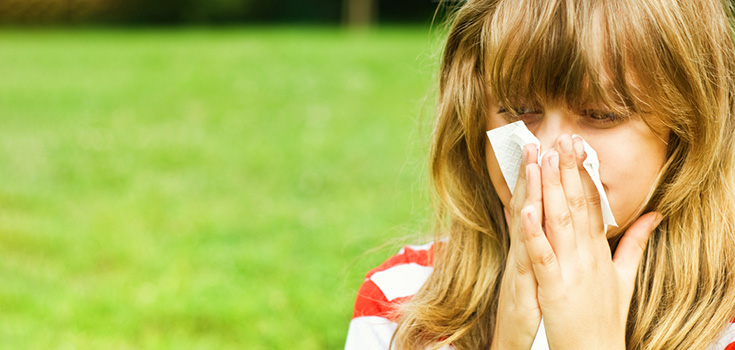Natural Allergy Remedies

By: Michelle Cryder
With pollen levels at an all time high this year, it can be tempting to surrender to the quick relief of over the counter antihistamines and decongestants. However when groggy side effects render you virtually comatose, choosing between clear breathing and clear-headedness isn’t much of a fair trade. Before hitting up the pharmacy counter, try some natural and herbal sinus-clearing remedies.
Consult your doctor before beginning any new treatments. Although natural, some herbs may interact with medications or have adverse effects if not used correctly.
Nettle (Urtica dioica)
This debatably toxic variety of plant contains between 35-40 species of flowering perennials. It has been used medicinally for centuries for everything from gout to anemia. In regards to treating allergies, double-blind studies conducted in 1990 showed it to be more effective than placebo. Recent studies have also shown it to treat rheumatoid arthritis by inhibiting enzymes responsible for inflammation, which may partially explain its effectiveness against allergies.
The nettle leaf also contains histamine, that when used in treatment may trigger a negative feedback response, resulting in symptom relief. When taken before allergy season, nettle can reduce the onset of symptoms or prevent them entirely.
Eucalyptus (Eucalyptus terticornis)
Found in plenty of over the counter decongestant balms and cold remedies, eucalyptus is simultaneously an antibiotic expectorant and an antiseptic. Lozenges containing eucalyptus have a numbing effect and increase saliva production that soothes the throat and reducing coughing. Eucalyptus essential oil can be used in as a steam inhalation to clear airways and treat infection.
To do this, pour boiling water into a large bowl with two or three drops of eucalyptus essential oil. Breathe above the boil approximately two feet away with a towel covering your head for about ten minutes.
Licorice (Glycyrrhiza glabra)
Studies from the late 50s showed licorice to basically act as a natural steroid by reducing inflammation and stimulating the adrenal glands. Acting much like cortisol, it has been used in conjunction to increase cortisol’s half-life, thus increasing the duration of its anti-inflammatory properties. It also contains glycyrrhizinic acid, which is believed to inhibit the growth of bacteria and viruses. Licorice is a common ingredient in natural cough syrup for its soothing properties and sweet flavor. It is most commonly taken in teas, allowing it to coat the throat and calming coughs.
Note: Habitual use, or exceedingly high doses of licorice can result in loss of potassium and high blood pressure.
Local honey as an allergy treatment

While no clinical studies have shown that this folk remedy has any effect on allergy symptoms, plenty of people swear by it as an effective treatment. The belief is that the pollen bits from local plants in the honey can boost one’s immune system, slowly reducing allergic symptoms.
Whether this is actually effective or not, honey does contain plenty of vitamins and minerals as well as powerful antioxidants. To give it a try, start with two tablespoons a day a few months before allergy season.
Nasal irrigation; Neti pots, etc.
Formerly used in Indian Ayurvedic tradition, the neti pot has recently made its way to the West as a way of effectively clearing nasal passages. Saline nasal irrigation (SNI) is becoming a widely used modern means of treating allergies, colds, and sinus infections.
ENT’s frequently recommend nasal irrigation to patients to clear the nasal passages post-surgery, and those with chronic sinus symptoms have reported relief after using SNI to flush the airways of excess mucus, allergens, and bacteria.
Today, neti pots can be found everywhere from the health food store to your local pharmacy. Generally, a mixture of one teaspoon of salt to one pint of lukewarm water. Sodium bicarbonate can also be added (½ teaspoon) for a gentler solution.
Note: Using SNI too frequently can dry out the sinuses too much and result in nosebleeds or infections. Generally, proper use is once daily until symptoms subside and three times a week thereafter.
